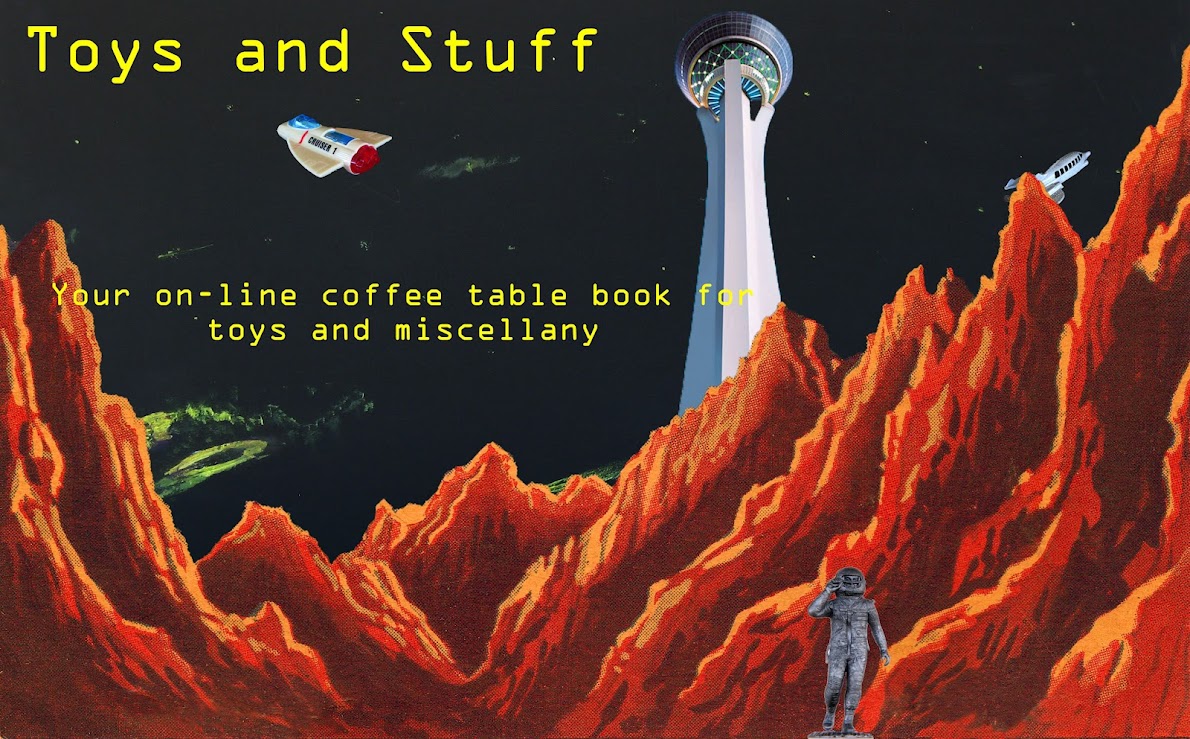This is a cross-posting from my series 'Pushing Tin' in the 'toy_tin_litho_bldgs' Yahoo Group. I posted this write-up on September 18, 2010.
"Today we begin by taking you back to the Golden Age of television with the Marx Tom Corbett Space Academy. The TV series began in 1950 on CBS, then moved to ABC from January 1, 1951 to 1952. After Kelloggs canceled the series, it returned for one season on the DuMont network from August 1953 to May 22, 1954 and its last season was on NBC from December, 1954 to June, 1955 and was sponsored by Kraft. Tom Corbett had the distinction of appearing on all four Golden-Age TV networks. By the series end, the star Frankie Thomas, who had appeared in the 'Nancy Drew' series of mysteries in the late 1930s and was by now 34 years old. The character he played was supposed to be a teenager attending the Space Academy to become a member of the Solar Guard! It was the first television space opera to feature halfway sophisticated plots - a departure from the constant boys-fighting-boys fare of earlier space shows. However, it still had its fair share of boys-fighting-boys with the friction between the characters of Tom Corbett and Roger Manning, who always seemed to get along when the chips were down.
Marx came out with the first Tom Corbett set in 1952 and was one of their early licensed products based on a television series. The set came with a walled compound comprised of metallic silver Academy Building, a gate, and nine interlocking fence pieces. The Academy is of course a variation of the shoe box design with a tower added. The gate design was common and used for Fort Apache, Space Sets, Zorro, etc. While the gate graphics would change with each space set incarnation, the graphics for the walls remained the same. At the time there were many fanciful ideas of what life would be like on other planets and so a tin-litho wall of 'ice' was no stretch of the imagination at the time. There was even a notion amongst toy makers that aliens would share their home worlds with dinosaurs - a popular theme! The building came with a clicker and the entire Morse Code, re-purposed as 'Space Code'. The licensed Tom Corbett sets were only made in 1952-53.
In 1953, Marx introduced the Rex Mars series of playsets. 'Rex Mars' was not based on any movie or television show. It was purely the brainchild of Marx, as such they could save money on licensing fees while still taking advantage of one of the biggest themes of the era - Space. The buildings are exactly the same except for color - they were now a bright yellow. The gate graphics were different (sorry - I don't have a gate to scan) but the wall graphics remained the same. Also, the interior graphics remain the same not only for the space sets, but also some Cape Canaveral buildings.
Hope you enjoyed this trip down memory lane as well as the photos!"
Marx came out with the first Tom Corbett set in 1952 and was one of their early licensed products based on a television series. The set came with a walled compound comprised of metallic silver Academy Building, a gate, and nine interlocking fence pieces. The Academy is of course a variation of the shoe box design with a tower added. The gate design was common and used for Fort Apache, Space Sets, Zorro, etc. While the gate graphics would change with each space set incarnation, the graphics for the walls remained the same. At the time there were many fanciful ideas of what life would be like on other planets and so a tin-litho wall of 'ice' was no stretch of the imagination at the time. There was even a notion amongst toy makers that aliens would share their home worlds with dinosaurs - a popular theme! The building came with a clicker and the entire Morse Code, re-purposed as 'Space Code'. The licensed Tom Corbett sets were only made in 1952-53.
In 1953, Marx introduced the Rex Mars series of playsets. 'Rex Mars' was not based on any movie or television show. It was purely the brainchild of Marx, as such they could save money on licensing fees while still taking advantage of one of the biggest themes of the era - Space. The buildings are exactly the same except for color - they were now a bright yellow. The gate graphics were different (sorry - I don't have a gate to scan) but the wall graphics remained the same. Also, the interior graphics remain the same not only for the space sets, but also some Cape Canaveral buildings.
Hope you enjoyed this trip down memory lane as well as the photos!"












